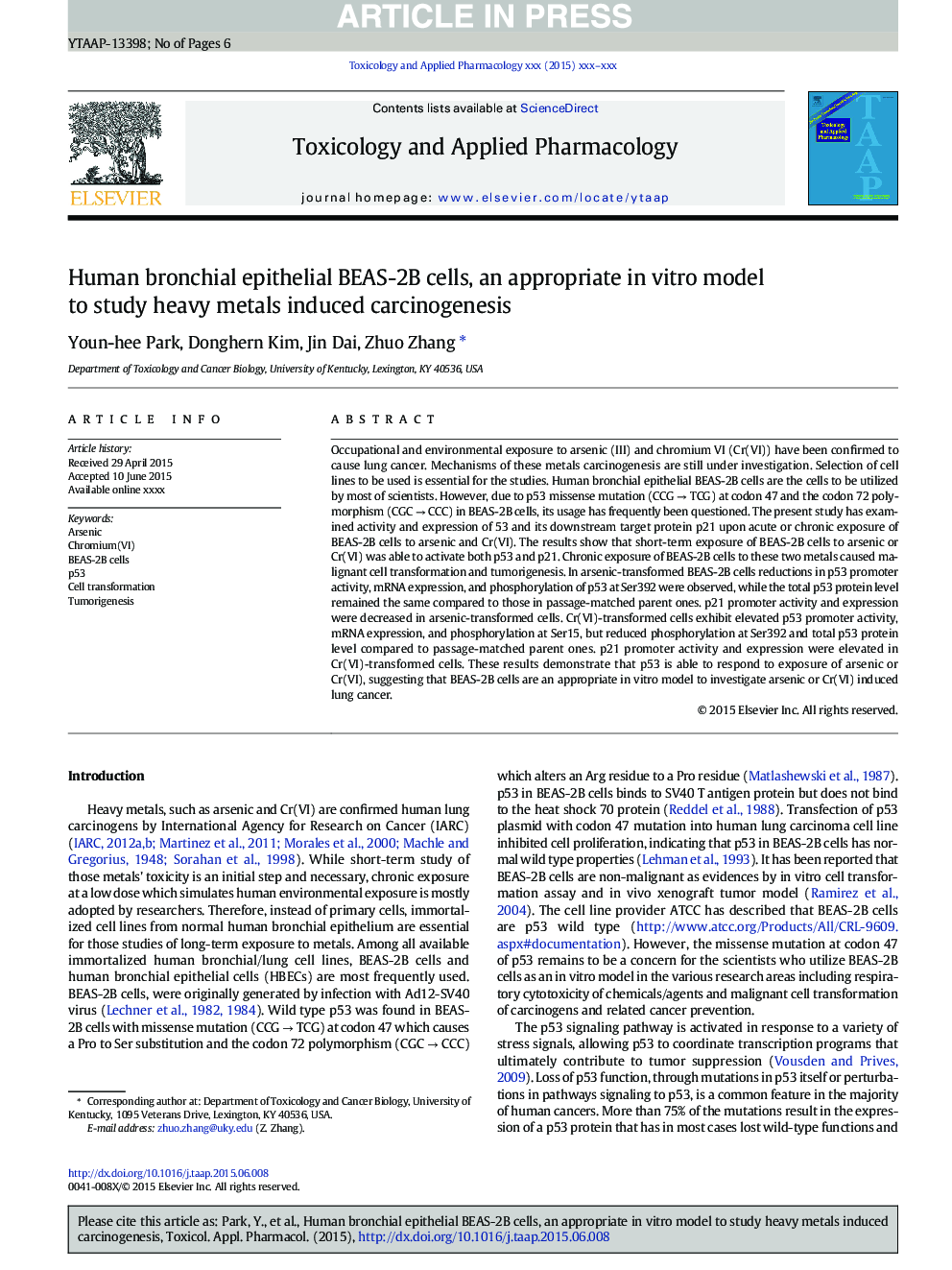| کد مقاله | کد نشریه | سال انتشار | مقاله انگلیسی | نسخه تمام متن |
|---|---|---|---|---|
| 5845940 | 1128437 | 2015 | 6 صفحه PDF | دانلود رایگان |
عنوان انگلیسی مقاله ISI
Human bronchial epithelial BEAS-2B cells, an appropriate in vitro model to study heavy metals induced carcinogenesis
دانلود مقاله + سفارش ترجمه
دانلود مقاله ISI انگلیسی
رایگان برای ایرانیان
کلمات کلیدی
موضوعات مرتبط
علوم زیستی و بیوفناوری
علوم محیط زیست
بهداشت، سم شناسی و جهش زایی
پیش نمایش صفحه اول مقاله

چکیده انگلیسی
Occupational and environmental exposure to arsenic (III) and chromium VI (Cr(VI)) have been confirmed to cause lung cancer. Mechanisms of these metals carcinogenesis are still under investigation. Selection of cell lines to be used is essential for the studies. Human bronchial epithelial BEAS-2B cells are the cells to be utilized by most of scientists. However, due to p53 missense mutation (CCG â TCG) at codon 47 and the codon 72 polymorphism (CGC â CCC) in BEAS-2B cells, its usage has frequently been questioned. The present study has examined activity and expression of 53 and its downstream target protein p21 upon acute or chronic exposure of BEAS-2B cells to arsenic and Cr(VI). The results show that short-term exposure of BEAS-2B cells to arsenic or Cr(VI) was able to activate both p53 and p21. Chronic exposure of BEAS-2B cells to these two metals caused malignant cell transformation and tumorigenesis. In arsenic-transformed BEAS-2B cells reductions in p53 promoter activity, mRNA expression, and phosphorylation of p53 at Ser392 were observed, while the total p53 protein level remained the same compared to those in passage-matched parent ones. p21 promoter activity and expression were decreased in arsenic-transformed cells. Cr(VI)-transformed cells exhibit elevated p53 promoter activity, mRNA expression, and phosphorylation at Ser15, but reduced phosphorylation at Ser392 and total p53 protein level compared to passage-matched parent ones. p21 promoter activity and expression were elevated in Cr(VI)-transformed cells. These results demonstrate that p53 is able to respond to exposure of arsenic or Cr(VI), suggesting that BEAS-2B cells are an appropriate in vitro model to investigate arsenic or Cr(VI) induced lung cancer.
ناشر
Database: Elsevier - ScienceDirect (ساینس دایرکت)
Journal: Toxicology and Applied Pharmacology - Volume 287, Issue 3, 15 September 2015, Pages 240-245
Journal: Toxicology and Applied Pharmacology - Volume 287, Issue 3, 15 September 2015, Pages 240-245
نویسندگان
Youn-hee Park, Donghern Kim, Jin Dai, Zhuo Zhang,